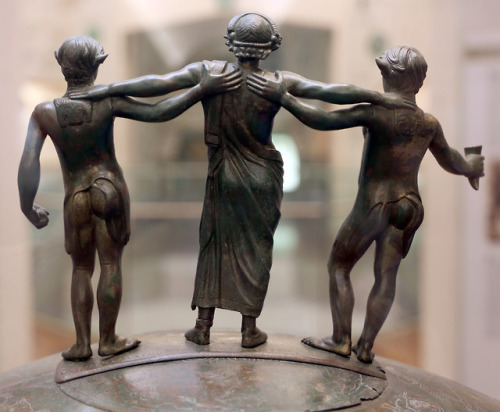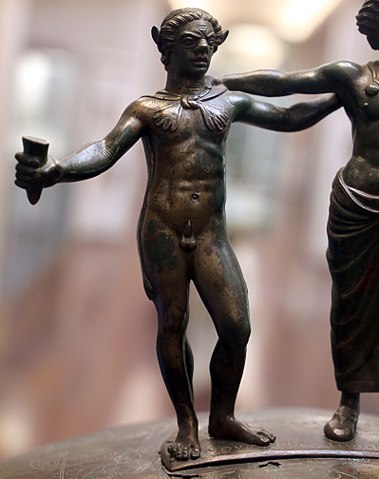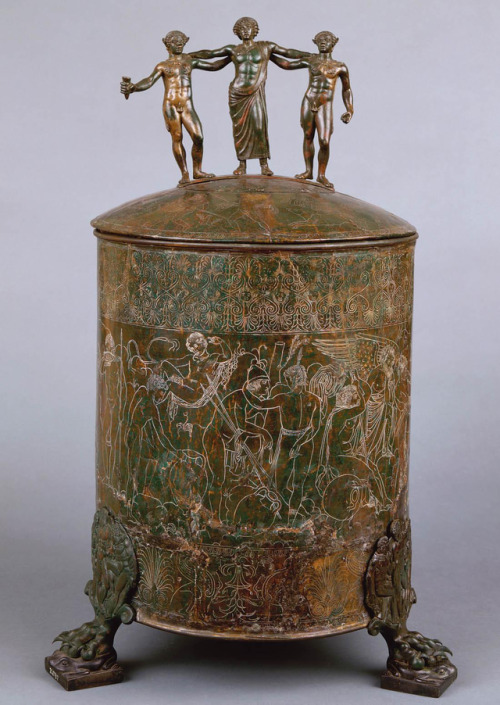ganymedesrocks:ratatoskryggdrasil:Novios Plautios, The Ficoroni Cista, 340-330 BCECheers! Granted t
ganymedesrocks:ratatoskryggdrasil:Novios Plautios, The Ficoroni Cista, 340-330 BCECheers! Granted the feel of this work seems very Dionysian or, by all means highly ritualistic. The engraving of the Ficoroni cista portrays the myth of the Argonauts, the conflict between Pollux and Amicus, in which Pollux is victorious. The engravings on the Ficoroni cista have been viewed as a reproduction of a lost fifth-century painting by Mikon. Difficulties remain, however, in finding the precise correspondences between Pausanias’ description of such a painting and the cista. That the engraving of the Ficoroni cista portrays the Argonauts myth is the easy part. The remainder of Pindar’s Argonauts, the sons of Poseidon, of Hermes, and of Boreas cannot be identified with any reasonable degree of certainty. In as much as the Boreades are represented wingless and seated on the Argo in the well-known Talos vase, one might be tempted to consider that the two youths on shipboard are the most likely candidates among the remaining unidentified figures for Zetes and Kalais, and given Euphemos’ importance, after Pindar’s account, one might suggest that he is the hero represented on such close terms with Jason, and that his brother, Periklymenos, stands directly behind the leader. By this process of elimination, the two youths in front of the Argo, one coming down the ladder, the other seated on the shore, would be Echion and Erytos, the sons of Hermes. However, the individual identifications of these six figures are highly tentative, the main point being that the six remaining figures on the cista are in some way equivalent to the remainder of Pindar’s heroes. -- source link
Tumblr Blog : ratatoskryggdrasil.tumblr.com
#etruscan#praeneste#ficoroni cista#ancient#art#vessel#bronze#figurine#tomb#etruscan women#funerary#argonauts#villa giulia



